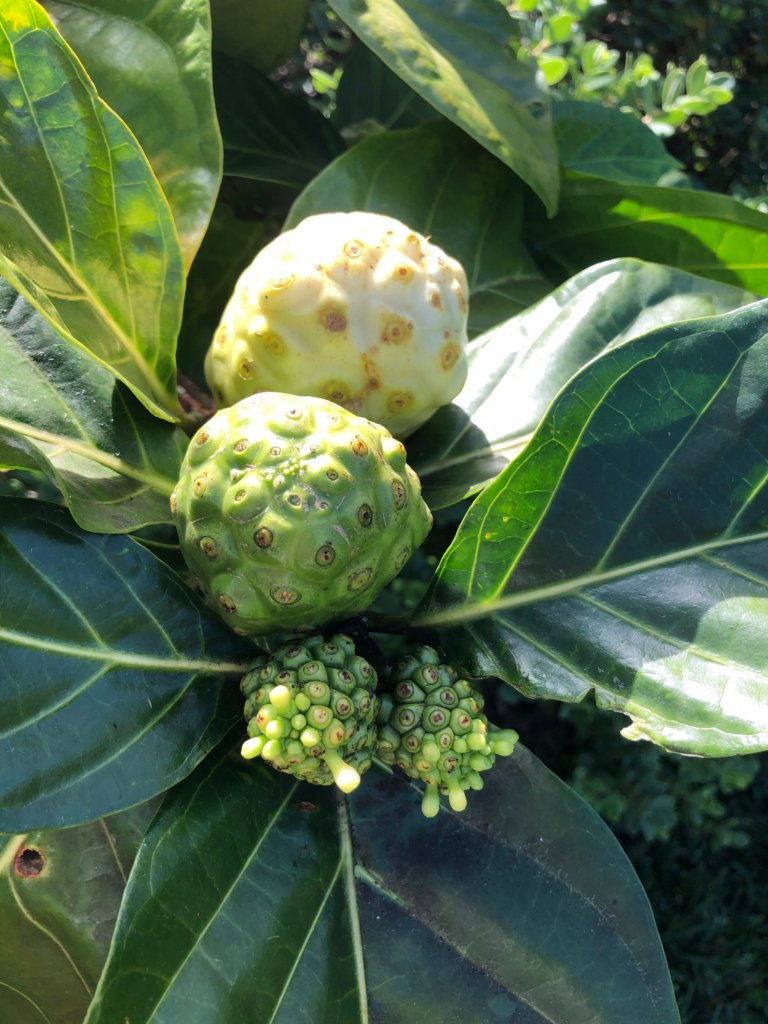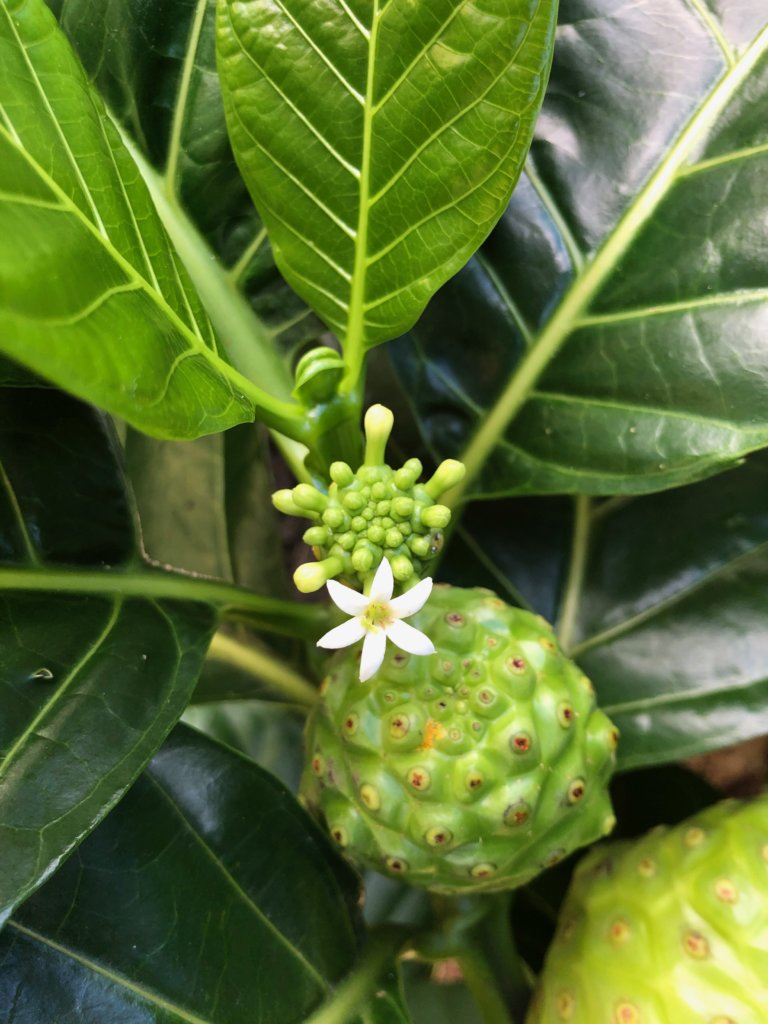Noni


Morinda citrifolia
Polynesian Introduction
Small evergreen tree. Whitish-yellow fruit is used medicinally as a poultice. The leaves were used to cure most types of muscle and joint pain by placing the leaves directly on the infected area and using heated stones and massage. Bark was a source of yellow dye—mixed with burnt color gives red—mixed with seawater is said to give blue. Bladder-like air sac attached to each seed provides a flotation mechanism to carry seeds across the sea. Hawaiians ate noni at times of extreme famine.
For centuries the noni has been praised as a cure-all medicine across the islands of the Pacific. Some prefer ripe fruit for making medicine, and others prefer green. Many drink it as a tonic, and others say only to use it externally. It can reputedly cure ailments ranging from arthritis, asthma, rheumatism, sores, boils, head-lice to even old age. The leaves were used to cure most types of muscle and joint pain by placing the leaves directly on the infected area and using heated stones and massage to release the healing properties into the skin.
Noni is a relatively small tree and is easily recognized by its large oval glossy leaves and knobby green fruits with “eyes.” As the fruit ripens it turns into a clear, jelly-like substance and acquires its notorious musty scent.
In addition to being a valued medicine, noni was used as a dye for kapa cloth. The inner bark of both the tree trunk and the root makes yellow or red dye.